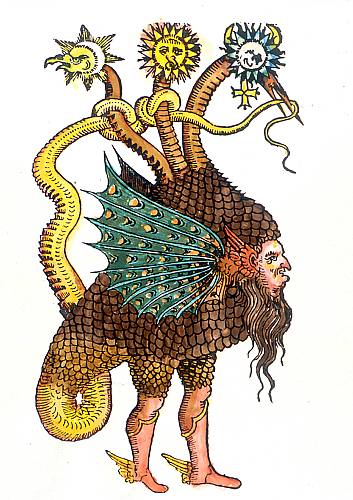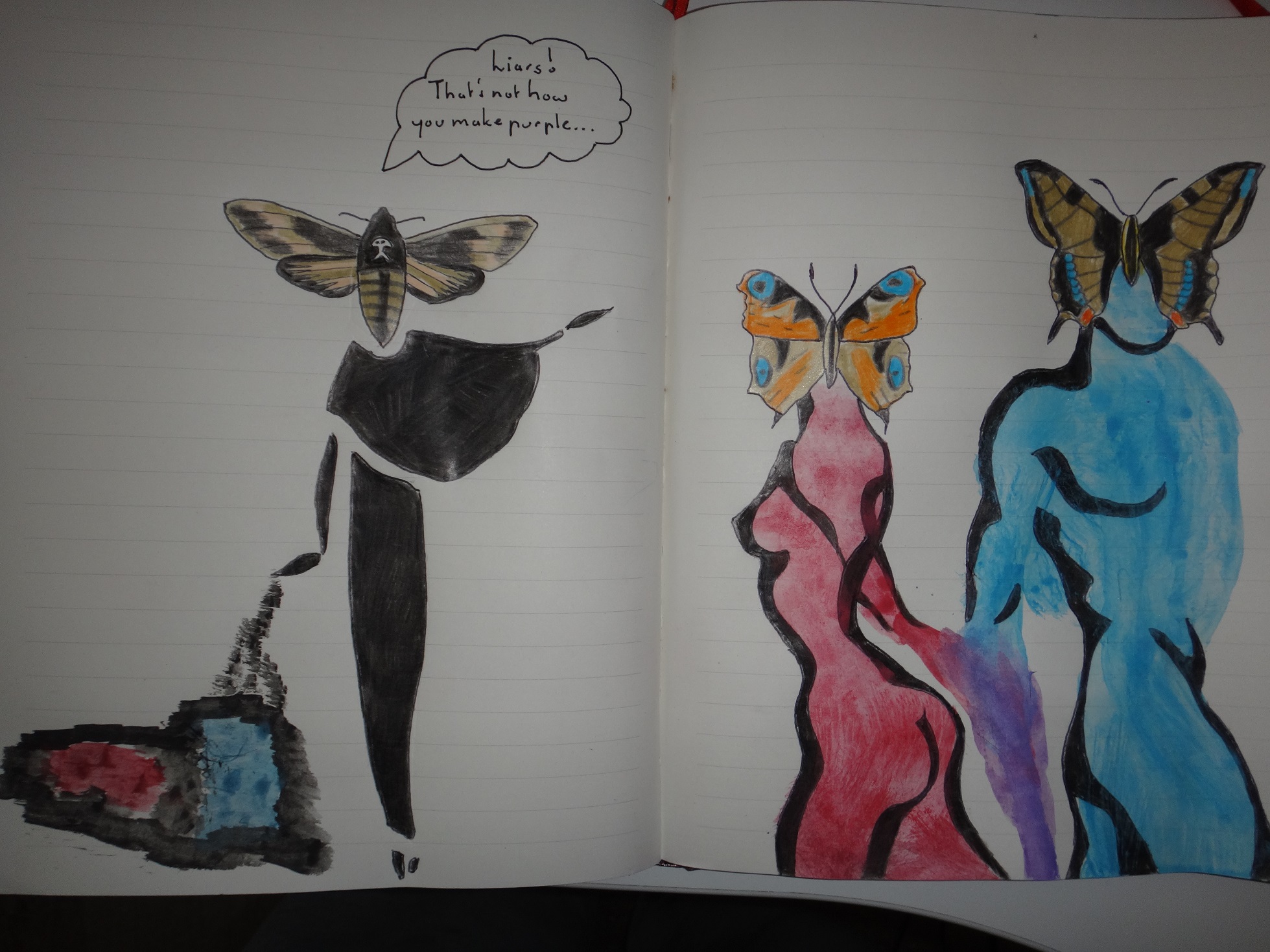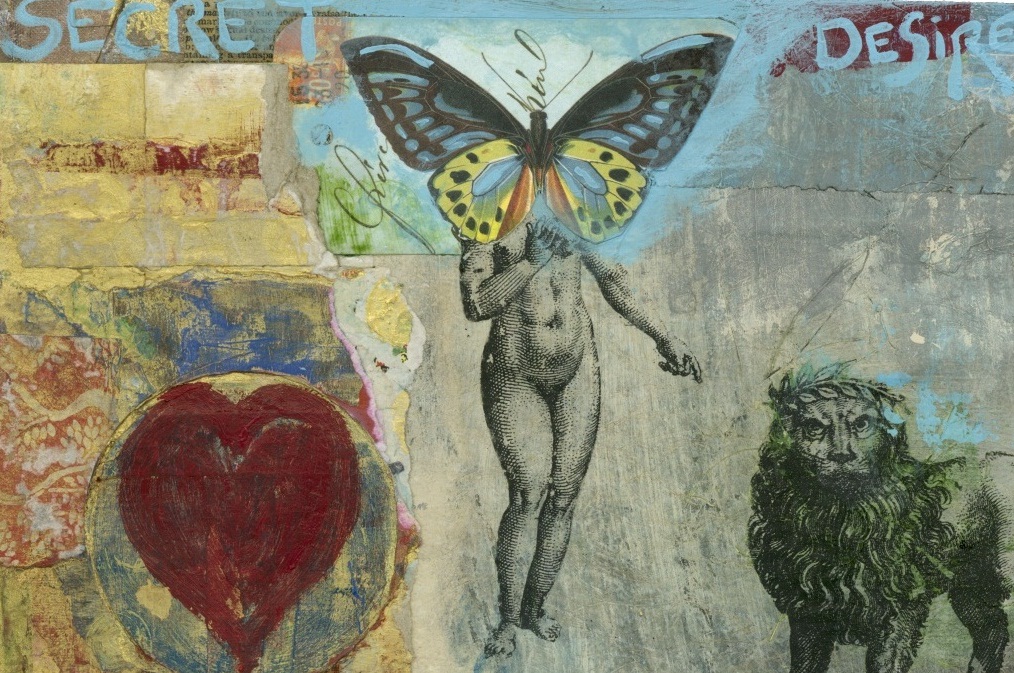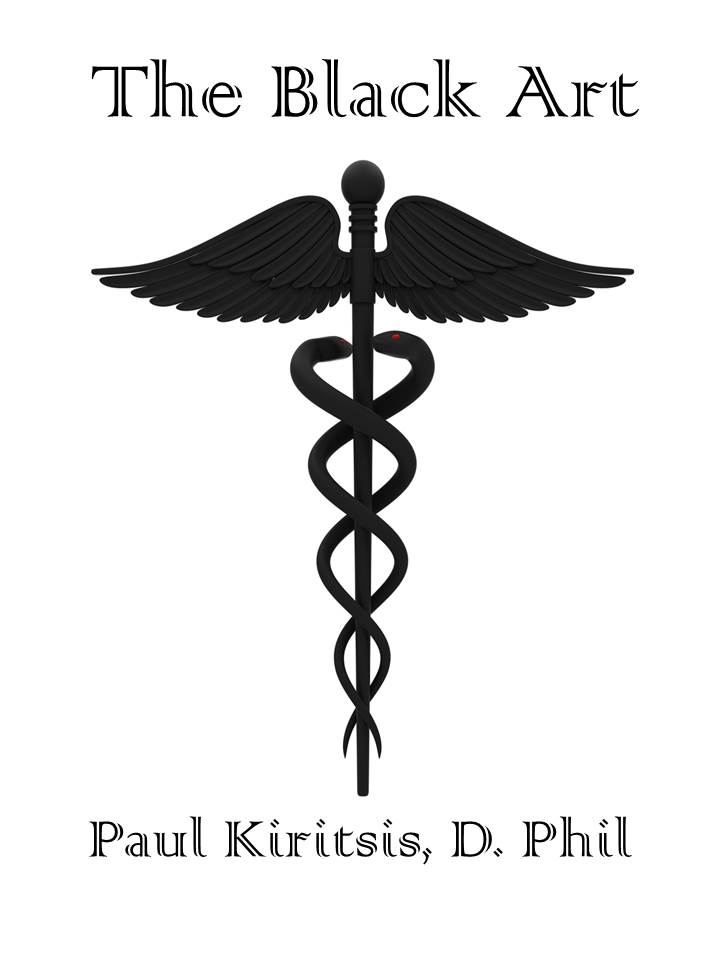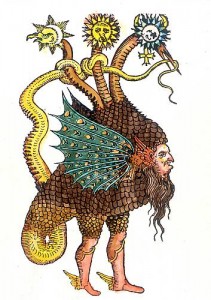
In hindsight, the external articulation and vibrant eccentricity of a vital essence for all living things in the universe is an innovation that probably originated with the Swiss physician, alchemist and philosopher Theophrastus Bombastus von Hohenheim or Paracelsus (1493-1541). In championing an alchemy that imparted cyclic conversion to the Aristotelian structure of matter and was fundamentally interconnected with astrology, natural magic, and an ‘occult’ cosmology, Paracelsus deduced that the progenitor of the cosmos had resorted to a succession of large-scale distillations of dense matter to produce different hierarchies of being or tiers of consciousness. This was followed by an assimilation of the Jabirian concepts of Sulphur and Mercury into his cosmogony, to which a third was added–Salt. These three concepts comprised a threefold anatomical division of the base substance or prima materia of the cosmos which could allegedly be manipulated using chemical methods in a laboratory to delimit natural processes and create herbal elixirs with miraculous healing properties.
For Paracelsus and his followers, Philosophical Mercury is ‘spirit’, Philosophical Salt is ‘body’, and Philosophical Sulphur is ‘soul’; the first happens to be positively charged, the second is negatively charged, and the third exhibits a neutral charge and acts as a binding force. Mercury or ‘spirit’ is the intangible essence of any organism or object that mimics corporeal vapour or water and eludes direct observation and quantitative analysis, Salt or ‘body’ binds or fixes the physical form together so that it doesn’t dissipate and adheres to the ashes once the organism or object is alchemically burned, and Sulphur or ‘soul’ is the mediating principle between ‘spirit’ and ‘body’ that fuses the polar opposites together for the complete life cycle whilst concurrently accounting for physiognomy and growth. Now, it just so happens that whilst Philosophical Mercury derives from the prima materia, it manifests at different vibrational frequencies in each of nature’s three established kingdoms. It is lowest in the vegetable kingdom and highest in the mineral realm. The ‘rate’ for humans and animals stands somewhere between the two just mentioned and is a rational esoteric deduction from the perspective that their ‘soul life’ is generally longer than that of plants but falls way short of the durability and longevity characteristic of rocks, minerals, crystals, and other inhabitants of the subterranean. Frater Albertus Spagyricus (1911-1984) transcribes these Paracelsian sentiments verbatim in The Alchemist’s Handbook and goes on to connect the alchemist’s Mercury with the notion of prana in Vedantic philosophy and the Chinese Qi. Mercury provides sustenance to the body and can be found in blood and breath, with more concentrated amounts pervading semen and vaginal fluid.
Alchemical esotericism has it that Philosophical Mercury is both a fiery and watery generative force responsible for the transformation of energies within an individual, or alternatively in the physical matter which exists around us. It is the prima materia, the base substance in which the solar ‘germ’ is nourished and transmuted but it is also the teleological pursuit to perfect all natural ‘forms’, the ultima materia. Both Western and Eastern alchemical treatises sometimes personify Mercury as an aerial spirit, cloud or fumigation. For instance, in the Taoist Chinese text The Secret of the Golden Flower, Mercury takes centre stage as a hermaphroditic soul with heavenly aspects that manifest as a masculine cloud demon and an earthly facet that appears as a feminine white ghost. The universality and sweeping nature of the image recalls the primordial ocean of chaos to be found in all creation myths, and implicates Mercury to be the animating feature of the entire cosmos, otherwise known as the anima mundi or the Platonic World Soul. On the plane of archetypal psychology, the demon and ghost could be interpreted as the anthropomorphic animus and anima of the subconscious that can reveal the individual stage of development each individual psyche has achieved on the ladder of spiritual integration (which Jung called individuation).
Jung, whose interpretation and commentary of this ancient Taoist text bridged Eastern mysticism with his own analytical psychology, deduced that spiritual attainment was dependent upon the reacquaintance of one’s ego with the transpersonal realm and the subsequent projection of its drives and needs away from day-to-day consciousness. This transpersonal realm, described by the Taoist text as the ‘roots of consciousness and life’ and ‘the blessed country close at hand’, hides the archetypal Self, a totality and unity of being that reconciles all inner conflict, harmonizes any friction caused by desires, impulses and urges that could sometimes be described as subpersonalities within oneself, and imbues life with a deeper meaning and purpose. When correctly interpreted, dreams will provide a small window through which the intercourse between the personal conscious and unconscious within oneself can be witnessed, as well as offering a symbolic transcription of the journey from ego-based existence to the superior personality. As any alchemist would tell you, it is the corrosive and disintegrating properties of the ‘poisonous dragon’, Philosophical Mercury, that makes it all possible; there can be no generation and crystallization of a new ‘form’, in this case an integrated psychic entity, if a dismemberment, putrefaction and dissolution of the old ‘form’ doesn’t occur first. The alchemists would also aptly disclose that this conflict and unification of autonomous psychic entities that spurs oneself on to self-actualisation or individuation and its perceptibility in dreams forms part of a much larger cosmological system upon which all processes of creation, rudimentary or complex, are based.
In some instances Philosophical Mercury is described by the alchemists as ‘spirit’ and in others as ‘soul’. This does not indicate a contradiction of sorts, but rather an individual preference for either one of the terms when describing exactly the same concept. Most are predisposed to seeing the anima or ‘soul’ as the psychic ‘form’ or resonance of the individual psyche whilst ‘spirit’ isn’t any intellectual and transcendental agent, but rather the vital essence that binds together the ethereal ‘form’ to the corporeal ‘body’. Both are relevant and intimately linked to the concept of Philosophical Mercury given that their sphere of influence does extend into the realm of the personal ego. On a psychological level, the latter is none other than the hermetic ‘fire’ which continually shapes the materia, the developing ego, as the fire of the oven roasts dough to produce bread.
The esoteric symbol for Mercury is comprised of all three rudimentary shapes; the circle, the semicircle, and the cross. In this particular arrangement the solar circle coagulates and fixes the cross of the four ethereal elements, but is itself dominated by the lunar crescent. This hermaphroditic constitution, unique amongst the esoteric symbols, delineates the inner friction between the fiery masculine and moist feminine generative forces upon which all processes of transmutation, or the transformation of all base matter, are dependent. It is base matter or prima materia, the ultima materia or ruby-red Philosopher’s Stone, and the electric-like spark that spurs the wheel of creation into motion, mediating and pertaining to every stage in the evolutionary development of the ‘germ’ or ‘seed’ but exclusive to none. It is the protean vital essence of all animals, plants and minerals that, by virtue of its state of eternal evolution, eludes quantification and compartmentalization, as well as the fluid, virginal menstruum or plastic film that encompasses the dynamism and possibility of all ‘forms’ and their final causes without ever entering into the process of creation or becoming. The unique properties and chemical behaviours of corporeal Mercury do much to elicit the true nature of its philosophical and alchemical counterpart.

